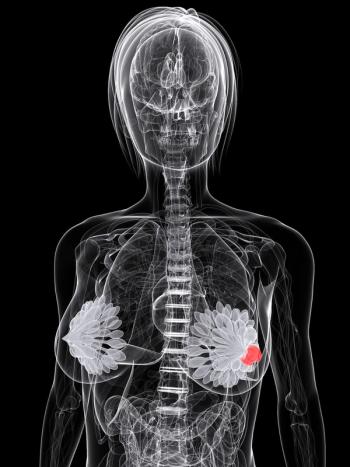
- Oncology Vol 29 No 4_Suppl_1
- Volume 29
- Issue 4_Suppl_1
(P100) Intensity-Modulated Radiation Therapy After Extrapleural Pneumonectomy With and Without Chemotherapy for Malignant Pleural Mesothelioma: No Fatal Pulmonary Toxicity and Long-Term Survival
In our patient population, strict adherence to lung dose constraints during IMRT resulted in improved outcomes without fatal toxicity.
Sameer Jhavar, J. Pruszynski, Y. Liu, A. Gowan, P. Rascoe, N. Thawani, N. Deb, Mehul Patel; Baylor Scott and White Hospital, Texas A&M Medical Sciences Center
PURPOSE: Intensity-modulated radiation therapy (IMRT) after extrapleural pneumonectomy (EPP) for malignant pleural mesothelioma (MPM) has been associated with fatal pulmonary toxicity. A single-institution experience with IMRT following EPP for MPM is reported.
METHODS: Between 2005 and 2014, a total of 18 patients with MPM were treated with EPP followed by hemithoracic IMRT. IMRT target volume was the entire hemithorax and the thoracotomy and chest tube incision sites. Patients were treated with a median dose of 4,500 cGy in 25 fractions. Kaplan-Meier curves were used to graphically asses the overall survival (OS) and relapse-free survival (RFS). Median survival times are reported for both OS and RFS.
RESULTS: Of the 18 patients analyzed, 17 were males, and 11 had right-sided tumors. Median age was 54 years (range: 40–76 yr). The most common histology was epithelioid type. Chemotherapy was neoadjuvant in four and adjuvant in seven patients. A total of 3, 12, and 3 patients had pathological American Joint Committee on Cancer (AJCC) stages II, III, and IV, respectively. Involvement of surgical margin, lymphovascular space, pericardium, and chest wall was seen in 9, 7, 12, and 3 patients, respectively. The highest and lowest mean lung dose (MLD) was 9.3 Gy and 5 Gy, respectively, with a mean of 7.14 Gy. The highest V20 (normal lung volume receiving ≤20 Gy) was 7%, and the mean V20 was 2.23% (range: 0%–7%). At a median follow-up of 3 years, 8 patients were alive and 10 patients were dead. Ten (55%) patients experienced disease recurrence. The median RFS and OS were 29.67 months (95% confidence interval [CI], 11.79–78.1 mo) and 38.2 months (95% CI, 17.4–78.1 mo), respectively. No grade 3 acute toxicities were seen. No grade 3 or fatal pulmonary toxicities have been reported.
CONCLUSION: In our patient population, strict adherence to lung dose constraints during IMRT resulted in improved outcomes without fatal toxicity.
Proceedings of the 97th Annual Meeting of the American Radium Society -
Articles in this issue
Newsletter
Stay up to date on recent advances in the multidisciplinary approach to cancer.
















































































